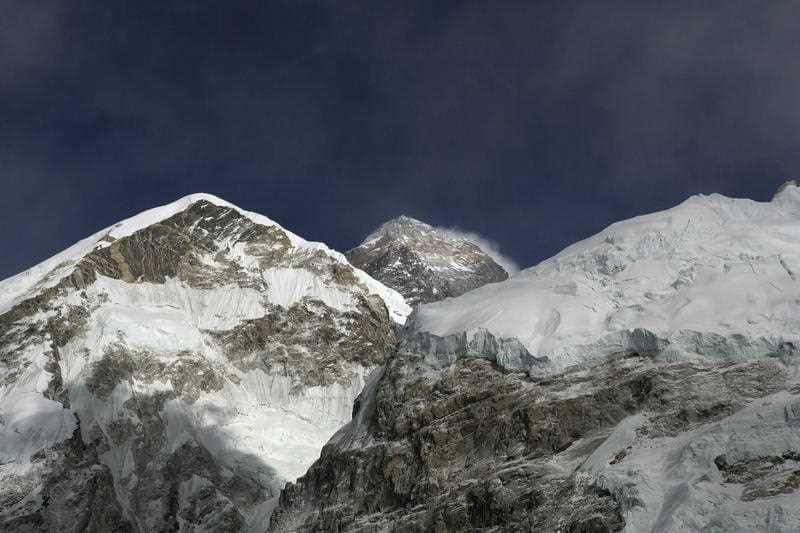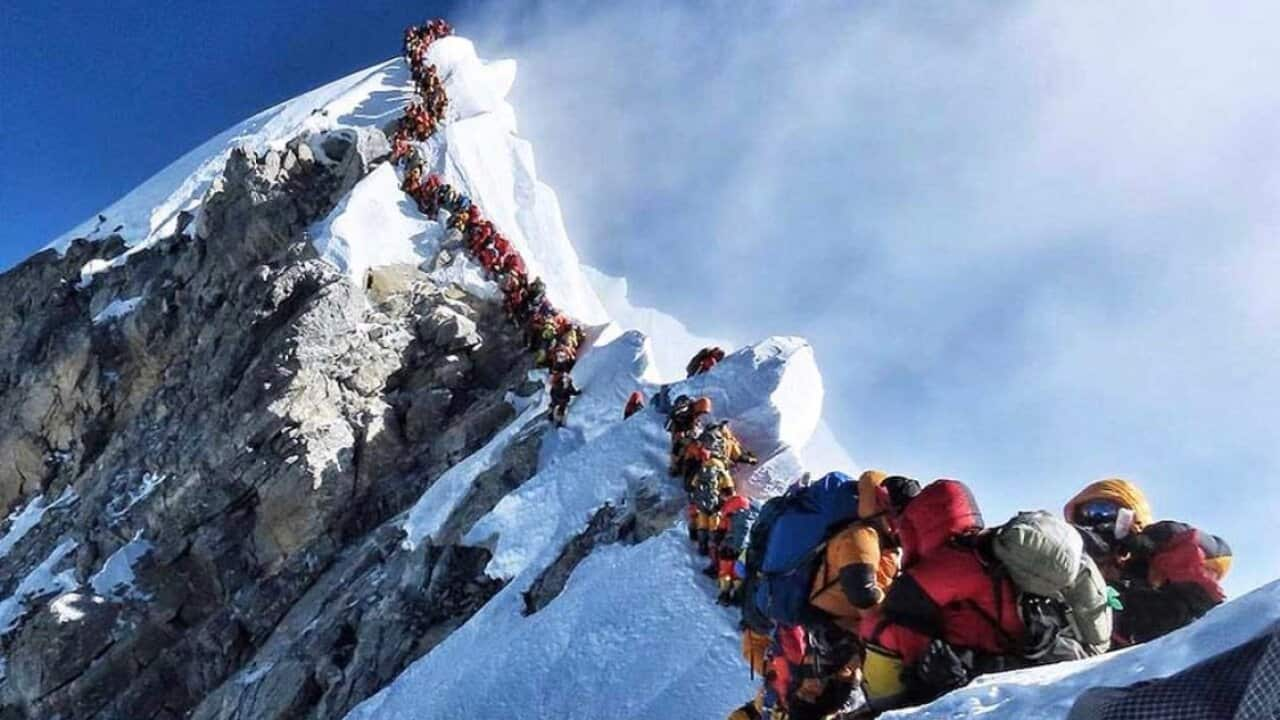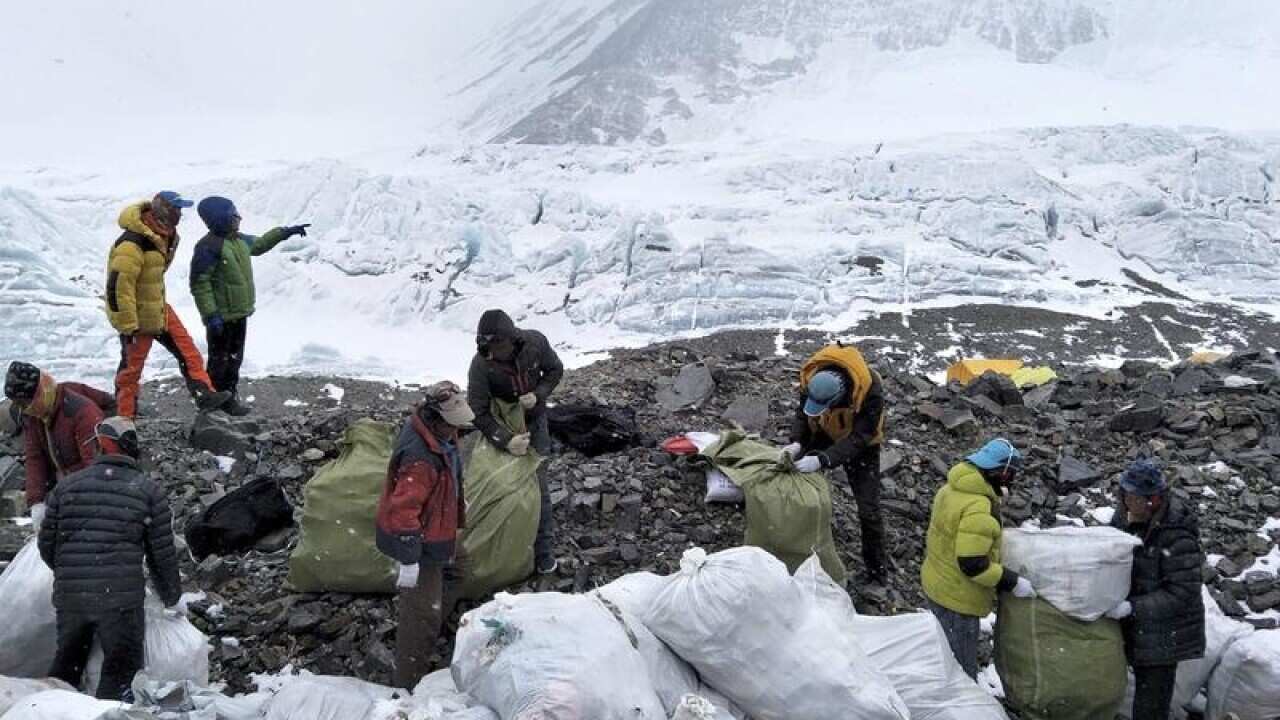A British climber has died on Mount Everest, bringing the death toll this season on the world's highest peak to 10, officials say.
Robin Haynes Fisher, 44, died early on Saturday at 8,700 metres after returning from the summit, said Murari Sharma of Everest Pariwar Treks in Kathmandu.
"He had descended about 150 metres below the summit when he suddenly collapsed. His Sherpa guide tried to rescue him, but he had already died," said Mr Sharma.
On Friday, 56-year-old Irishman Kevin Hynes died in his tent at 7,000 metres after turning back before reaching the summit, UK-based climbing company 360 Expeditions said in a statement.
That same day, Nepalese guide Dhurba Bista, 33, died at the base camp after being airlifted from a higher camp following illness, according to his employer, Anil Bhattarai of Himalayan Ecstasy Treks.
Three Indians - two women and one man - died this week during their descent after scaling the peak, as hundreds of climbers pushed for the summit while taking advantage of this week's weather windows.
They were named as Anjali Sharad Kulkarni, 54, from the commercial capital of Mumbai, and 49-year-old Kalpana Das, from the eastern state of Odisha. Both died while descending from the summit.
The Indian man who died, also while descending, was Nihal Ashpak Bagwan, 27, from India's western city of Pune.
"Bagwan died of dehydration, exhaustion and tiredness after being caught in the jam of climbers," said Keshab Paudel of the Peak Promotion hiking agency which handled the climber's logistics.
"We don't know for how long the jam lasted nor how many climbers were clogged by a single line near the summit," Mr Paudel said.
Earlier this month, a US climber and an Indian climber also died during their descent from Everest. An Austrian climber died on the Tibetan side of the 8,848-metre peak.
Seamus Lawless, another Irish climber who went missing on May 16, is presumed dead on the mountain.
Babu Sherpa, the managing director of Peak Promotion, said overcrowding had congested the route from Camp IV to the top.
"There were only short weather windows and everyone was trying to climb at once," he said.
Hundreds of climbers attempt to climb Mount Everest and other Himalayan peaks during the spring climbing season.
Five climbers died on Everest last year.
Danger levels
An image featuring a dense stream of people ascending Everest's summit that was tweeted by a climber went viral last week for highlighting the extent of overcrowding that is ramping up danger levels.
It comes as a "traffic jam" of climbers has been blamed for the high number of deaths in the past couple of days, heightening concerns that the drive for profits is trumping safety on the world's highest peak.
Over the past week, the amount of climbers who have died is already matching the average total of annual deaths which officials put at between five and 10.
More than 120 climbers scaled Everest on Thursday, but some of them were caught in the crowd of people on the slopes, leading to exhaustion, dehydration and death, the officials said.
Overcrowding crisis
Since Edmund Hillary and Sherpa Tenzing Norgay made the first ascent in 1953 more than 4,000 climbers have reached the top of Everest, according to the Himalayan Database.
Nepal has issued a record 381 permits to climb to the top of Everest this year, topping the previous record of 373 permits in 2017.

Mount Everest is 8,848 metres high. Source: AAP
Recent years have seen especially rapid growth, with the mountain opening up to more people as competition between expedition organisers has caused a decrease in costs.
But rising numbers mean greater risk and a higher chance of bottlenecks as larger teams climb the slopes.
This leads to potential shortages of oxygen and increased risk of frostbite, exhaustion and death.
There have been calls for better crowd management and a cap on the number of permits issued annually.
Share


